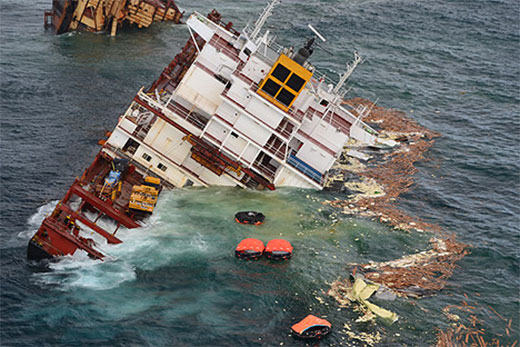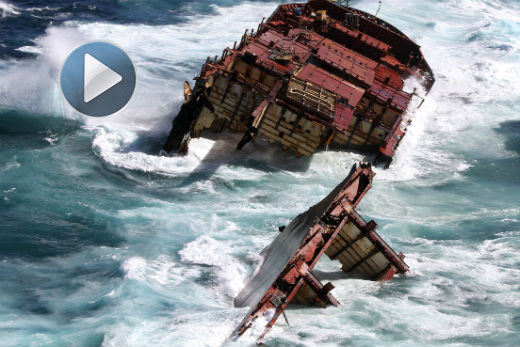Five years ago today the containership Rena drove itself onto Astrolabe reef at about 17 knots, ensuring it was stuck fast - and opening a cascade of environmental damage that engrossed the nation.
Rena was a panamax container ship, 236m long, 32m wide and weighing in at 47,231 tonnes deadweight, with a cargo capacity of 3,351TEU, twenty foot equivalent units.
The video, dubbed should it stay or go?, shows the Rena when it first grounded and whether or not politicians felt it should stay on the reef.

In what was soon tagged as New Zealand's worst environmental disaster, oil and containers washed onto beaches that till then had suffered spillages of only suntan oil.
While some of Tauranga's marine related businesses never fully recovered from being forced to lose a summer's trading because of the ongoing impacts of the Rena, the local hospitality industry thrived.
Tauranga was deluged with bureaucrats who set up shop in the former Foodtown supermarket (Now Harvey Norman on Cameron Road) to manage the disaster.
Accommodation was also laid on for the wildlife, mainly oiled little blue penguins who were de-oiled and housed in a series of specially built ponds at the Te Maunga waste water treatment plant, until the oiled beaches and rocky coast could be cleared of oil – largely by hand.
Courtroom dramas, inquiries and reports also examined how the ship came to strike the reef. The Captain and first officer were jailed briefly because they tried to cover up the navigation error.
The investigation found that the ship's actual position was known by a junior officer who wrote it down in a book instead of plotting it on the chart. The Captain and first officer were leaning over the chart table at the time. If the correct position had been plotted on the chart, things may have turned out differently.
Instead, they tried to alter the position as recorded in the book.
Once the immediate environmental impact of the wreck was mitigated, the salvage saga carried on for years, only to be halted by the decision of the resource consent hearing at the Westpac Stadium late in 2015, to leave the remainder of the wreck on the reef.
Recreational fishing resumed on the reef on April 4 2016, when the exclusion zone imposed soon after the ship struck the reef, was lifted.
Fish stocks which had nearly five years to recover were knocked back to pre-wreck levels in about three months says Gwyn Brown at Tauranga Dive.
He favours banning fishing on the reef altogether, believing a less stringent Maitaitai reserve will be impossible to police. Leave the reef alone and the expanding fish stocks will feed out to the other reefs, as happened while the exclusion zone was in force, says Gwyn.

Buddy Mikaere from Motiti Island's Ngati He hapu says they have always regarded Otaiti reef as a place to get a feed.
'It's quite an important place as far as local culture is concerned,” says Buddy. 'We didn't actually mind sharing it with others, as long as there was some restraint practiced. What's happened in recent times was just horrendous.
'I can see how other people might think this is a solution to make it a marine reserve, but then what do we do?”
The other Motiti hapu, Nga Hapu o Motiti, backed by Forest and Bird, wants the Government to leave the exclusion zone around the reef for another two years, while a more lasting solution is sought.
Take a look back at some of the stories that emerged following the grounding.




1 comment
Not Really Accurate
Posted on 05-10-2016 11:26 | By Bay Guy
I don't think it's right to say the Rena drove itself onto the reef. An inexperienced and negligent crew were responsible here.
Leave a Comment
You must be logged in to make a comment.